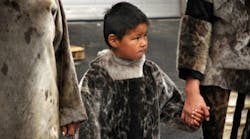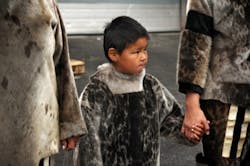Dental therapists: How dental hygienists can improve dental care access in Pacific Northwest
By Jamie Collins, RDH, CDA
Access to medical and dental care in our country is an ongoing challenge for many individuals, whether it is due to location or economics. Our country is made up of individuals from many different walks of life with a varying degree of socioeconomic factors who have the desire for complete care regardless of limited access.
The emerging trend of dental hygiene therapists has literally opened doors for dental hygienists who meet the criteria and licensing requirements to provide care such as simple extractions and fillings in addition to “traditional” preventative therapies provided and set forth by each state’s dental practice act. For the outlying regions and corners of our country, it allows for hygienists to provide care to the populations that are in the most need.
Alaska’s dental health aide therapist
In the vast and often isolated landscape of Alaska, there are many remote villages and areas that are underserved and in desperate need of a care provider. With dental offices few and far between, the job of a dental therapist is a welcome and much needed service.
Alaska has approved a dental health aide therapist (DHAT) as part of the Native Dental Therapy Initiative. The hygienist is trained and supervised to provide the traditional dental hygiene services we are accustomed to, in addition to providing fillings and simple extractions as needed. According to the Native Dental Therapy Initiative, the utilization of dental therapists in Alaska has broadened the reach of care to include another 40,000 residents who would have likely gone without dental care.
Of the procedures performed by DHATs in Alaska, 85% are preventative with the remaining 15% being other procedures within the scope of practice. On the quest to become a DHAT, a hygienist undergoes a year of comprehensive coursework, 3,000 hours of clinical training, 400 hours of dentist supervised work to master 46 procedures. The DHAT’s are extensively trained and supervised to provide the procedures and education that residents are in dire need of.
Native American tribes in the Pacific Northwest have now adopted the model and are implementing dental health aide therapists on the reservations to provide care to members.
A tribal outreach in Oregon
Oregon has a strong population of American Indian/ Native American tribes that are scattered throughout the state. In the state, a few dental hygiene therapists are making a difference by providing the needed care after completing an extensive training program in Alaska. In a joint effort with the state and local tribes, they are able to work under the generalized supervision of a dentist to provide care to members of multiple tribes.
The pilot project that Oregon has created is showing how the increased access to a care provider has greatly benefitted the communities within the Coquille Indian tribe, the Confederated Tribes of the Coos, Lower Umpqua, and Siuslaw Indians in addition to the Native American Rehabilitation Association. With access to the communities that are often underserved, it allows the residents to receive preventative care, and in theory it will help reduce the need for emergency care in the future.
Following the Alaskan model
The Port Gamble S’Klallam Tribe in Washington state recently implemented a Hygiene Therapist to provide quality care and bridge the gap and expand access to care to the local tribal members. Alaska has displayed a working model that has been proving itself successful over the past 10 years and now the lower forty-eight states are able to develop and follow the model. DHATs recruited by the tribe and are trained in conjunction with Ilisagvik College in Alaska, with the understanding they will return to the tribe to provide quality care for its members.
There are 562 federally recognized tribes in the United States; 229 tribes are located in Alaska. Over 4 million people within the United States are American Indian/Native American, which roughly translates to 1.5% of the population. Within the Native American communities, 2.4 million live in counties with a dental health-care shortage, and nearly one-third are children.
In a 2014 oral health survey, it was discovered that by age 5 nearly 76% of the American Indian population has experienced dental decay, which is disheartening number. As care providers we are well aware of the oral-systemic link with prevention and early treatment being important. Life threatening conditions such as diabetes and heart disease increase the risk of periodontal disease and likewise the conditions are harder to control if oral disease is rampant. Having a dental therapist on site to provide care and education may decrease risk factors, and in turn increase the quality of life.
Role of teledentistry
The emergence of teledentistry can make the access to care even easier that it was just five years ago. We now have a way to provide care and get a diagnosis often without the physical presence of a dentist to diagnose. Teledentistry can have different elements of care using x-ray images and intraoral photos in addition to an evaluation. An intraoral camera is one of the best tools for both education of the patient and as a point of reference and diagnosis.
The face of dental care is changing and how we are treating patients as a society is progressing, the medical and dental communities need to continue to integrate care together.
Growing up in small town Oregon and having a tribal reservation on the edge of town has given me the perspective to see how often many of the families struggle to make ends meet. Putting food on the table and heat in the house comes before any medical and dental care. The model that provides hygiene therapists to tribal communities and underserved areas of our country provides a much needed opportunity for hygienists to serve some of our countries most at risk residents.
Jamie Collins, RDH, CDA, is a clinical practicing hygienist in Idaho and Washington states. She has been in the dental field for nearly 20 years, both as an assistant and hygienist. With a passion for patient care, especially those with higher risk factors, Jamie enjoys sharing the tips and tricks of dental profession through speaking and writing. In addition to clinical practice Jamie is also an educator, has contributed to multiple textbooks and curriculum development, and contributes as a key opinion leader. Jamie can be contacted at [email protected].







